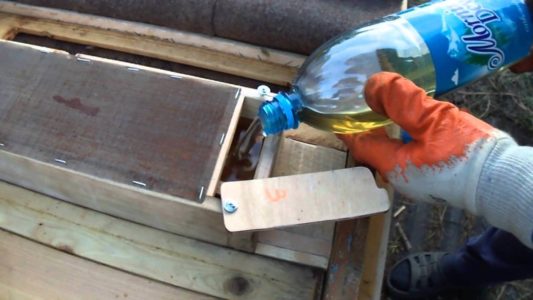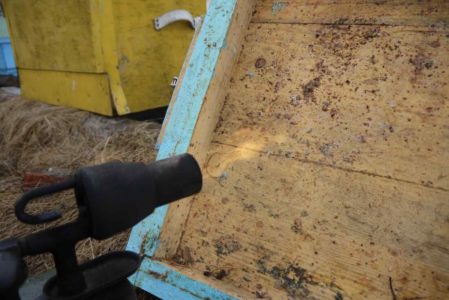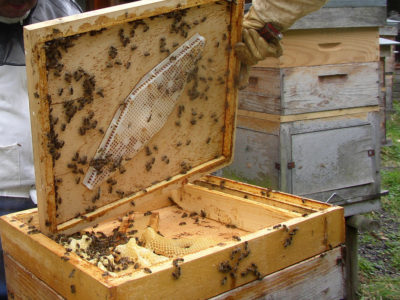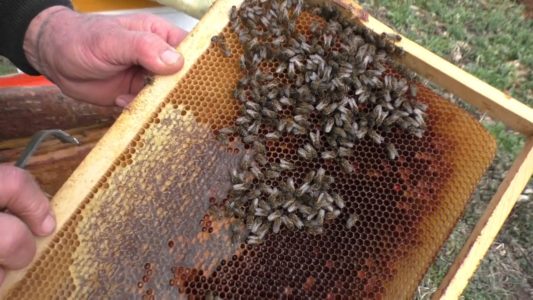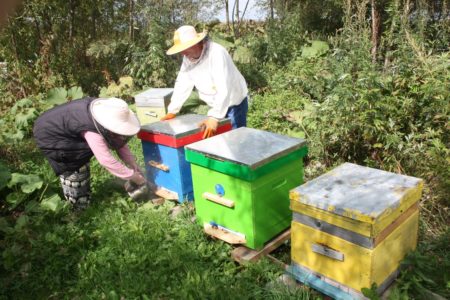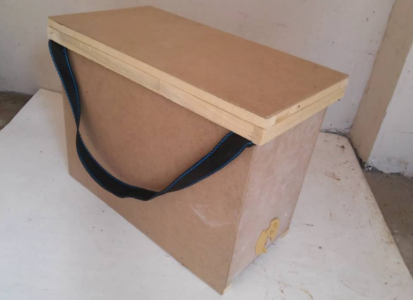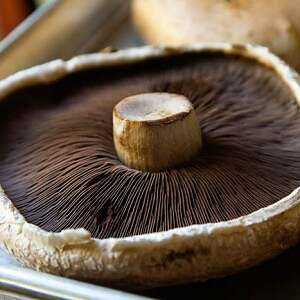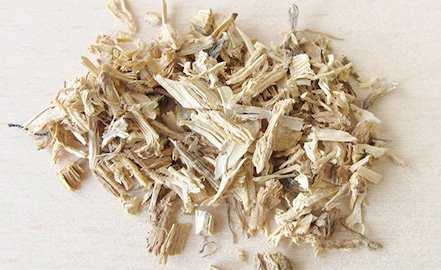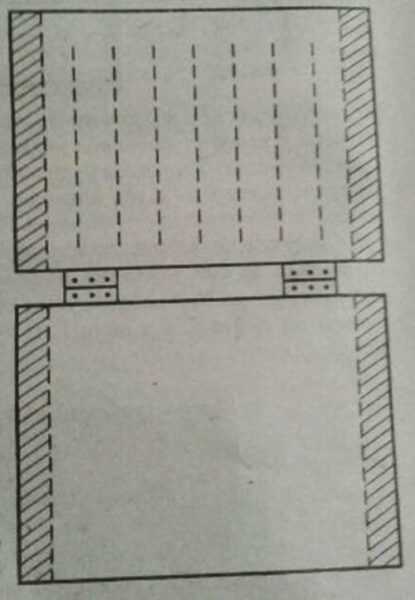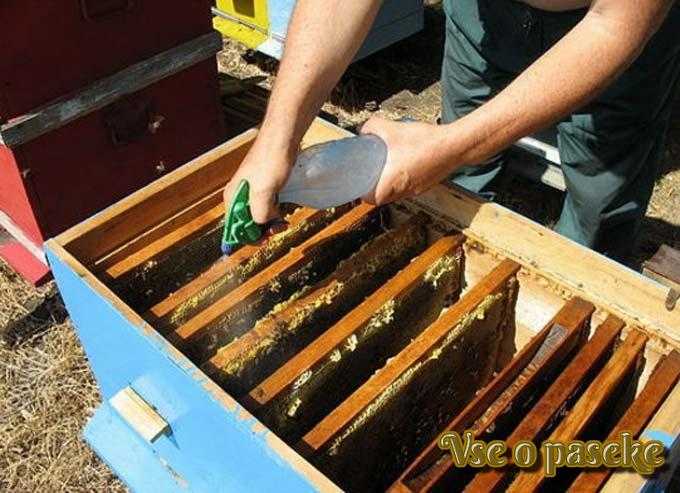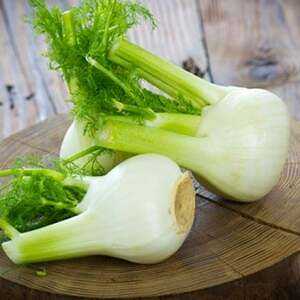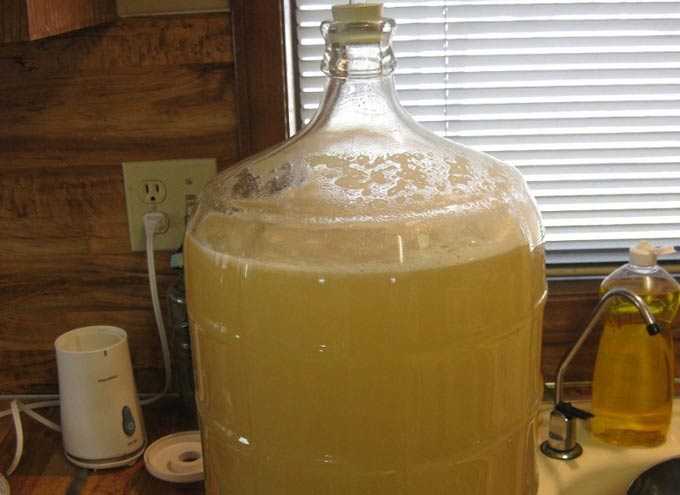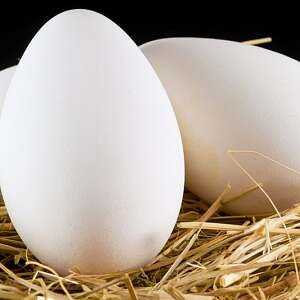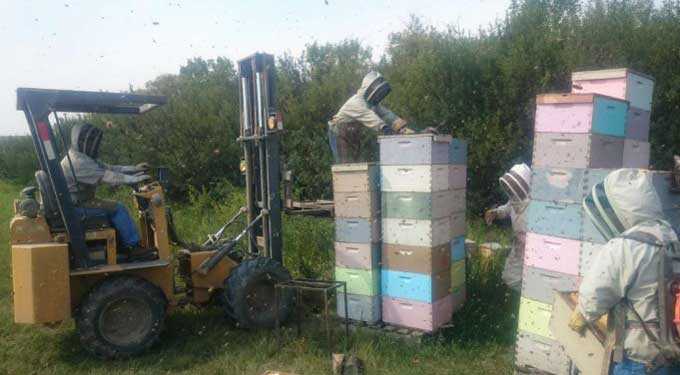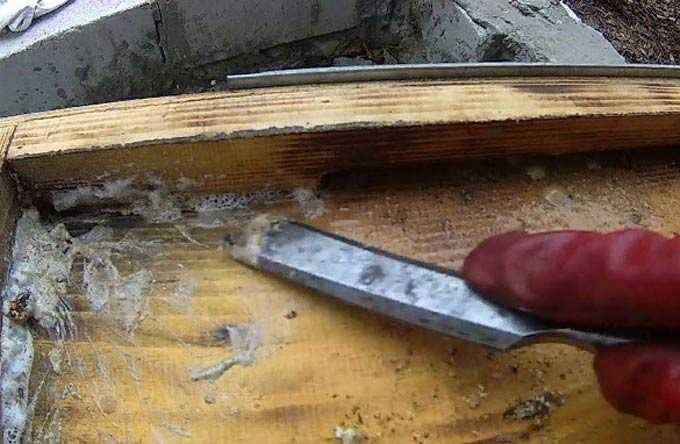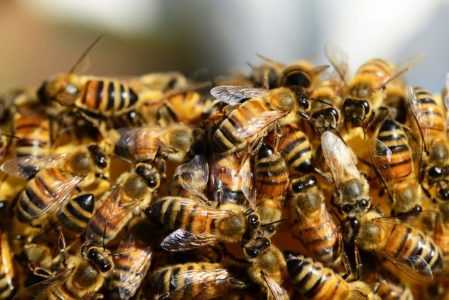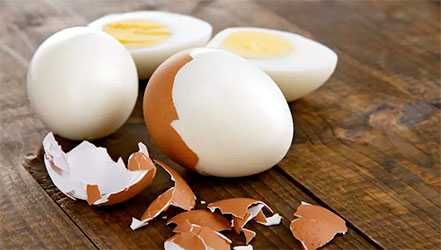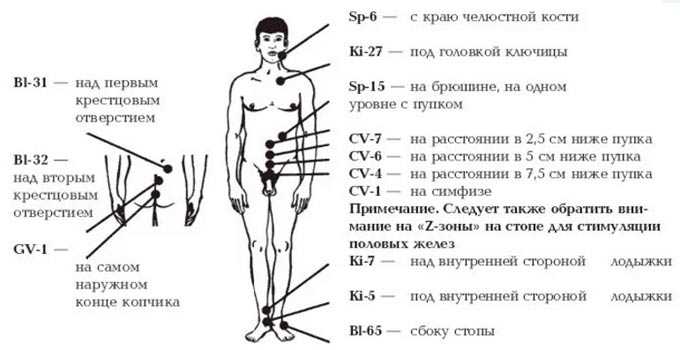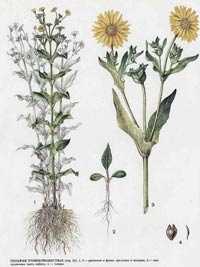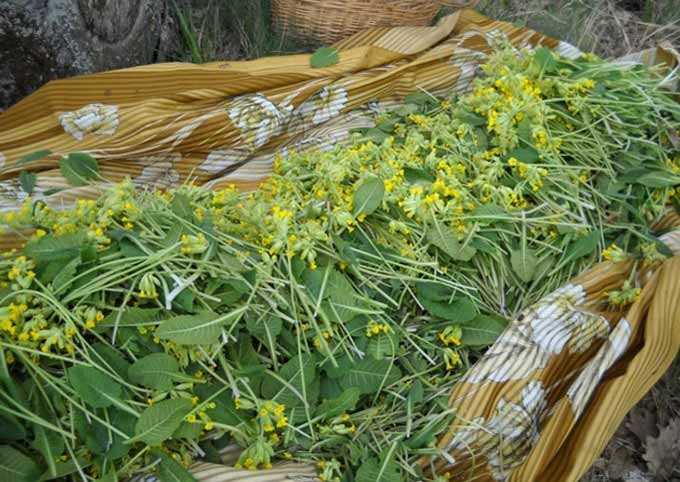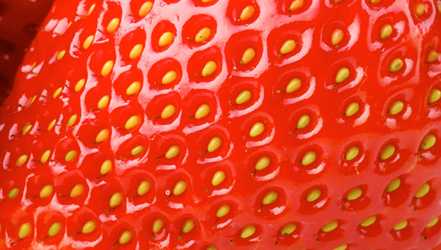Wintering requires a large expenditure of vitality and body resources from honey insects. After its completion, it is necessary to provide all families in the apiary with the opportunity to quickly increase their numbers. Often, in this case, it becomes necessary to transplant bees in the spring into a clean hive in order to wash their former dwelling from pollution, treat them from infections, and repair.
Everything you need to know about the transplant process
Families of bees are advised to move to new hives every 2 years in the spring in order to prevent the spread of harmful microorganisms. The need for an unscheduled procedure is determined by examining the insects after the first flight. The main reasons for replanting bees in a new hive are:
- severe contamination of the walls and bottom with feces;
- symptoms of swarm infectious diseases;
- accumulation of moisture, impregnation of wood with it;
- breakage, the appearance of large holes in the walls.
Prepared hives should be stored until spring in a warm, dry place. Both new houses and clean, strong ones from the number of previously used ones are suitable for transplantation.
For reference!
Bees adapt more easily to a new hive if it does not differ in design and color from the previous one, if it is in the same place. Therefore, families are usually relocated to the same type of dwellings in the spring.
One of the main skills in the annual care of bees is how to replant them without great losses. The procedure should be carried out carefully, but quickly, then the swarm will not scatter around the apiary. The best period for it is early spring, when bees are less active, more often they sit in hives.
Disease control
If symptoms of an infection that have spread among bees that have weakened during wintering are found, transferring them to a disinfected hive in the spring becomes one of the effective treatment measures. Care should be taken to prevent contact of healthy families with an infected one, the transfer of pathogens on clothes, hands to other insects.
Types of transplant for infections
In the spring, sick bees are sometimes moved without a nest or with a part of it, using empty waxed frames. Infected items, after removing insects from them, are put into a box for further disinfection.
Beekeepers use 2 methods of family relocation during early and late spring:
- With fasting.
- Double.
With the first type, you need to quarantine in a cool room. The swarm is placed on a smooth surface. The bees are gently shaken off the frames. When they go inside the swarm, the container is closed. She is in quarantine for 2 days, after which the family is settled in a clean hive.
A double transplant takes longer and is often combined with replacing the old uterus. The house of infected bees is replaced with a treated hive, inside which there are waxed frames (with food and empty frames for brood hatching in the spring).
In front of the entrance, a board covered with paper or cloth is placed on which the bees are placed. If you light the insects from behind, they will quickly crawl into the entrance. Then the hole must be closed with a net so that no one leaves the house. After 6-8 days, the procedure is repeated. The holes are kept closed again for about a week.
Medical feeding
Diseased insects transplanted into clean hives are required to be given sugar syrup mixed with medicine until they recover. The finished product is poured into the feeders about 1 time per week.
For reference!
Top dressing in the spring is also carried out for the prevention of diseases in all families living in the apiary. Healthy bees need only 2 procedures.
To make a medicinal product, first stir sugar in heated water (ratio 2: 1), waiting for it to boil. The resulting syrup is cooled to 33-35 ° C. It is mixed with antibiotics, for example, of the tetracycline series. Warm medicine can be given to insects.
Processing and disinfection
The hive freed from the bee colony is sent for cleaning, the elimination of harmful microorganisms. From the bottom, you need to sweep away waste, scrape off wax, propolis from all surfaces with a chisel. This garbage is burned. The bottom, walls and lid of the house, empty frames are wiped with soda solution, washed with hot soapy water.
For reference!
Treatment of the hive from pathogens is carried out with hydrogen peroxide, preparations containing chlorine. Beekeepers use different methods of heat treatment: gas torch, blowtorch.
After disinfection, the equipment must be kept in a heated room under a plastic foil for 10 days. It stands open for the next 2 weeks to remove the smell. You can take out hives with closed entrances outside if warm, dry weather is established – they will be ready faster for the next tenants.
Rodent and damp control
If condensation accumulates inside bee houses or traces of mice appear in the spring, insects need to be relocated before they get sick. The entire nest is placed in a new hive if it is not covered with mold. The beekeeper examines the combs, sweeps the debris off them.
If necessary, replace the damaged frames with waxed ones or treat them with a drug. The bees are gently shaken off the old honeycomb into a clean house.
After flying around the entrance to the new dwelling, families are reduced. A second transplant is not required. The released structure is disinfected.
Transplanting bees correctly
The beekeeper should replace the hive quickly so as not to kill the insects and their brood hatched in the spring, to prevent the swarm from leaving the new home. The beekeeper will need a smoker, a portable box, and tools.
The dwelling of the bee colony is shifted by closing the entrances beforehand. An empty, clean case is placed on the stand. Good frames from the old beehive are transferred into it in turn, covered with bees, and if necessary, food is added.
For reference!
The main thing is to move the uterus without damage. Healthy insects will fly after her themselves. To do this, they are fumigated and gently knocked on the walls of an open hive.
Crawling individuals will need to install a board, a sheet of plywood between the entrances. The bees that have fallen from the frames must be collected on a spatula and shaken off inside the new housing.
The whole procedure should not take more than 15 minutes, otherwise the family will be overcooled.
About air temperature
It is important to choose the right day for the bee transplant. It can be done in early spring when the air temperature is not lower than + 14-15 ° C in the morning, if the weather is sunny, calm. Cold is dangerous for brood.
When transplanting bees in late spring, it is easier to make sure that insects from other houses do not fly onto the removed frames. They are usually already busy with the work of extracting a bribe and do not seek to steal honey.
Relocation to a different type of hive
The process is complicated if the new house of bees differs from the old one in smaller size and shape. The transfer of the family is carried out not earlier than the end of spring. From the frames on which the insects have placed the brood in the spring, adult bees are shaken off to a new house. The structures are cut to the required size and also placed in the finished clean hive.
If necessary, transfer the combs with honey and bee bread, reducing them. All excess is fed to insects. A treat with sugar syrup will allow you to quickly get used to a new home and strengthen the nest by the end of spring.
Warming recommendations
After transplanting, bees need a comfortable temperature for adaptation and reproduction, especially since their nest usually decreases until the end of spring. The new hive is insulated on the sides and on top (above the canvas covering the frames) with fabric pillows filled with a filler, covered with a film. Inside mats, pillows, you can pour straw, moss.
Providing heating
During the cold early spring, bees can be helped by installing electric heaters to raise the temperature of the nest. Choose a convenient place for them on the sides of the hive or under the frames. The breeding process at an optimal temperature is much faster if there is an adequate supply of feed.
Keeping warm is especially important for families weakened by the disease. They often close the lower notch in the first months of spring in order to reduce the outflow of heated air.
Portable transplant box
Experienced beekeepers make a special box that can be placed in the hive, kept inside the swarm for some time. The drawer has an opening at the front, which can be covered with a lattice frame if necessary.
This design is convenient to use for moving bees in the spring to a new hive, if the frames from the old one have already been removed. The easiest way to assemble a family is to attach a cage with a uterus inside the box. The rest of the bees are swept to the bottom of the vacated hive, a box with an open hole directed downward is placed above them. The holes are closed. In a few hours, insects surround the uterus, and the grate can be lowered to the exit from the box.
It is recommended to put a frame with food in a portable box so that the bees do not die of hunger. Especially if it is used for quarantine.
The transplantation of bee colonies, carried out during the early spring, is a necessary and responsible event. It requires the beekeeper to be attentive, quick and careful. In a new place, the bees will be more likely to heal, they will be able to increase their numbers in good living conditions.

